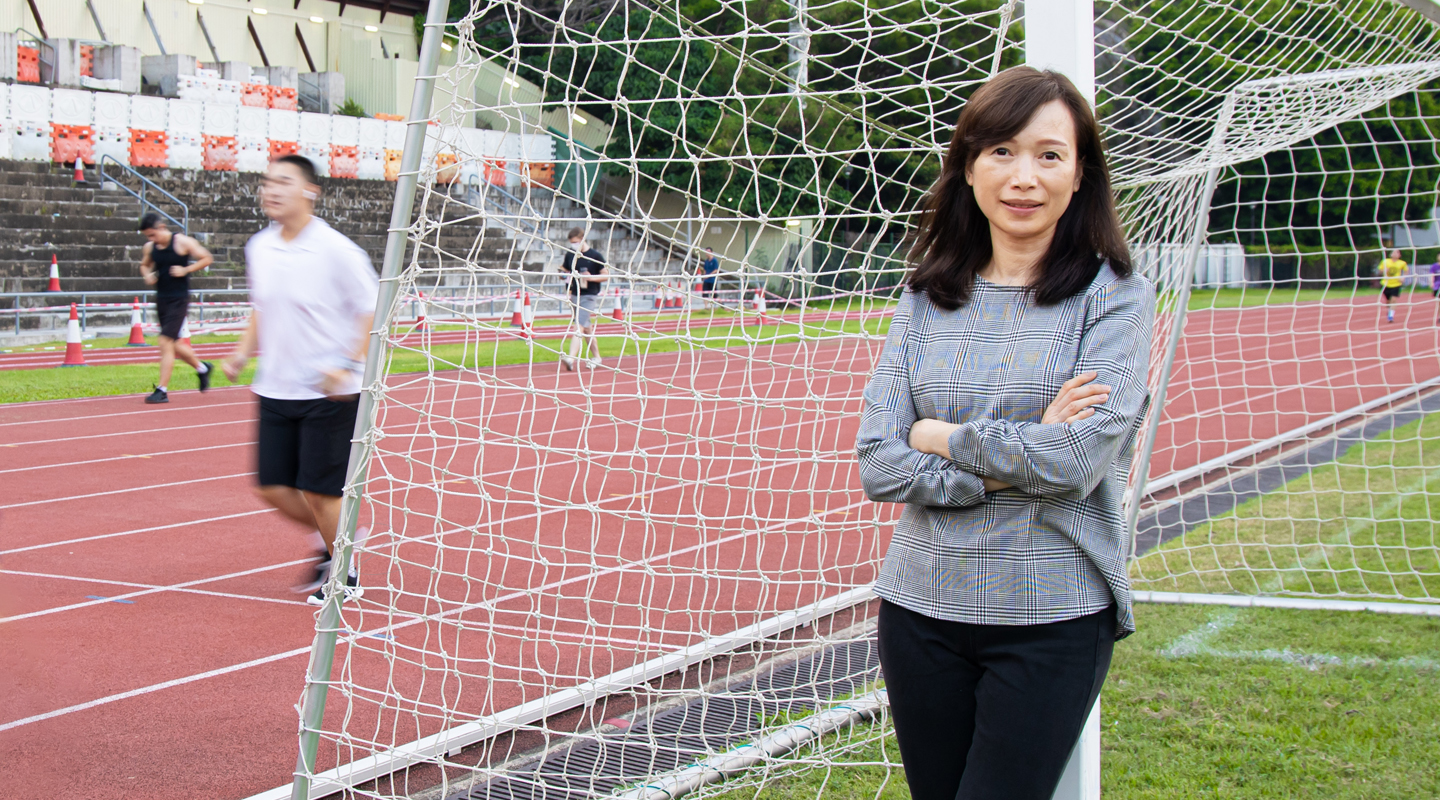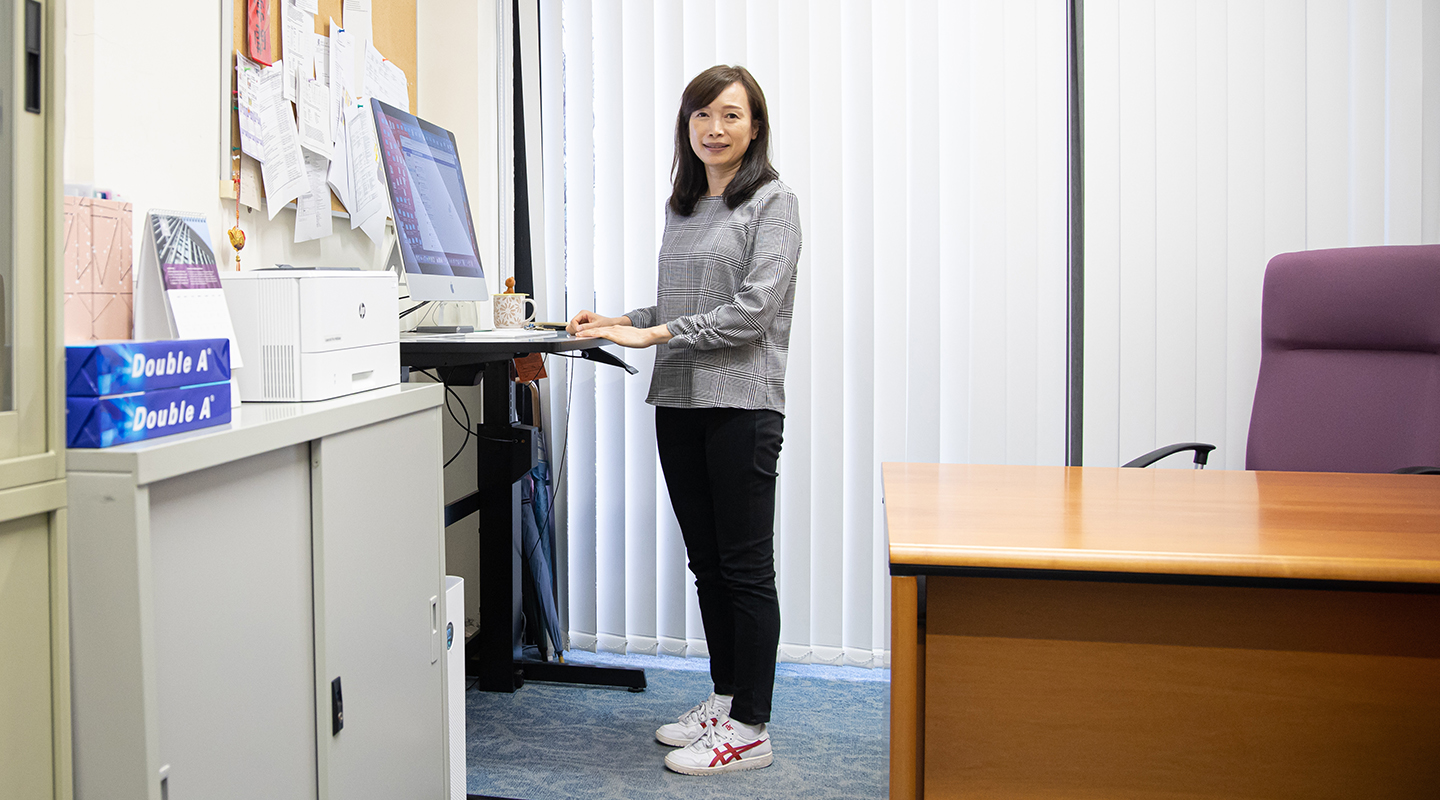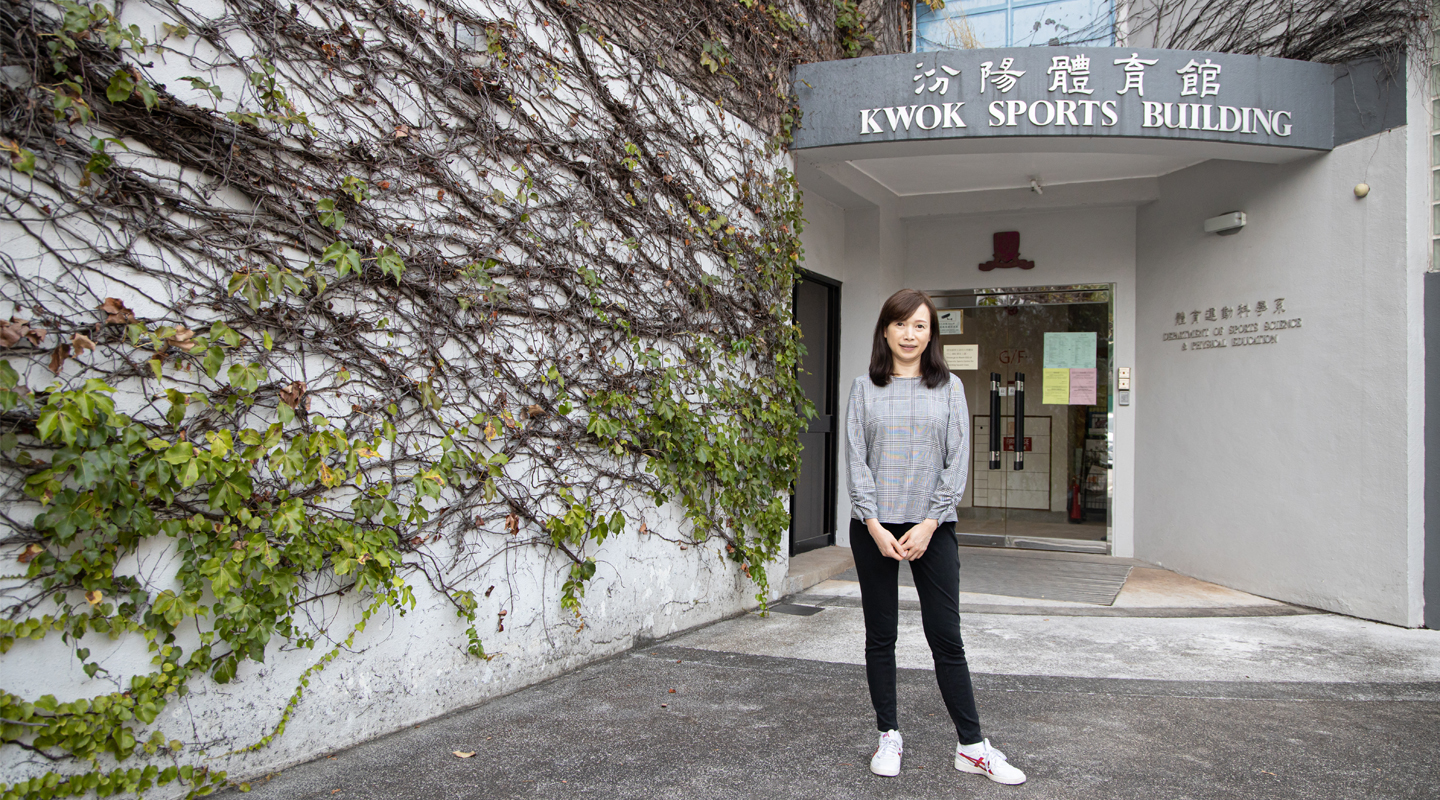Dear readers, With the launch of e-newsletter CUHK in Focus, CUHKUPDates has retired and this site will no longer be updated. To stay abreast of the University’s latest news, please go to https://focus.cuhk.edu.hk. Thank you.
Keep the Game On
Cindy Sit explains how to turn Olympic inspiration into action

After an unprecedented one-year delay, the Tokyo Olympics finally opened on 23 July 2021. While billions of fans around the world tuned in to watch their favourite athletes from home, many were fuelled to ditch the couch and lace up their sneakers: sports facilities were fully occupied, fitness courses saw spikes in enrolment, and sportswear stores were swarming with old and new customers. But the question remains—how can we stay motivated and maintain an active lifestyle after the Olympics Effect? CUHKUPDates poses this question (and many more) to Prof. Cindy Sit, chairperson and professor of the Department of Sports Science and Physical Education, who points out the most convincing reasons for us to go active, and the most effective and scientific ways to lose some pounds and get in shape.
The health benefits of regular exercise and physical activity are aplenty. But which are the most desirable ones?
Undoubtedly, the most desirable benefit of exercise is weight loss and muscle building. When you engage in physical activity, you burn calories. After exercising, your body repairs tired muscles and builds up new ones. Since all of this takes calories to do, exercising more will help you control your weight.
Regular exercise has many emotional perks, too. It stimulates feel-good endorphins and other natural brain chemicals that can enhance your sense of well-being. It takes your mind off worries so you can get away from the cycle of negative thoughts that feed depression and anxiety.
In people over the age of 50, exercise also improves certain aspects of cognition, such as memory, attention and learning. Studies show that people who are physically active are less likely to experience a decline in their cognitive function and have a lowered risk of developing dementia by about 30%.
In a word, physical activity does wonders for your body, mind and brain.
How much exercise is needed to reap these benefits?
According to the 2020 World Health Organization guidelines on physical activity, adults aged 18–64 years should do at least 150 minutes a week of moderate aerobic activity, such as walking and biking, or 75 minutes a week of vigorous aerobic activity, such as running and swimming. They should also do muscle-strengthening activities on two or more days a week, such as doing push-ups, lifting weights and working with resistance bands.
Of course, regular trips to the gym are great, but don’t worry if you can’t find a large chunk of time to exercise every day. Any amount of activity is better than none at all. Just try to slip in physical activity throughout your day—take the stairs instead of the elevator, or get off the bus at an earlier stop and walk home. These simple tricks can make a big difference and add up to provide health benefits.
Sitting for long periods of time may negatively affect your health, even if you get the recommended amount of weekly activity. A recent review by a group of researchers from the University of Cambridge analysed 54 intervention studies and found that reducing or breaking up sitting time alone can improve cardiometabolic risk biomarkers such as glucose and lipid metabolism and blood pressure regulation in adults. If you have to sit for hours a day at work, aim to take a five-minute break for every 60 minutes spent sitting, walk more frequently to get a drink of water, or stand during phone conversations or video meetings. The bottom line is to limit the amount of time spent being sedentary as much as you can.

When it comes to weight control, what are the biggest myths about it?
Many believe sit-ups can burn off belly fat, but that’s a misconception. Sit-ups are great for tightening your core, but to lose a pound of fat, you need to burn 3,500 calories, which translates to 30 minutes of exercise a day for most of a month, be it sit-ups or brisk walking. While it is relatively easy to walk for half an hour, doing sit-ups for the same amount of time is as silly as it is impossible.
It is also widely believed that exercising on an empty stomach helps burn more fat. Wrong again. You need energy to get active, and the main source of energy for your body comes from blood glucose. When you work out in a fasted state, low blood glucose may leave you feeling lightheaded, nauseous or shaky. You will have to reduce your exercising time and intensity, hence less effective in fat burning. A light meal before your workout, like having some toast or bananas, is more recommended.
Then what are the most effective, science-backed ways to lose body fat?
As a rule of thumb, weight loss is generally 70% diet and 30% exercise. It is easy to consume a large number of calories very quickly, like eating an entire pizza worth around 1,000 calories. At the same time, it is hard to burn a large number of calories—even after a really intense workout, you are still only likely to burn around 600 calories. While diet and exercise are both important for long-term weight loss, you can never out-exercise a bad diet.
But it’s also worth remembering that eating pizza or drinking bubble tea every now and then isn’t bad. And there’s no reason to feel guilty if you do. It’s just a case of adjusting the rest of your daily or weekly intake so that you’re still eating fewer calories than you burn. After all, diets that leave you feeling deprived, hungry or unhappy can cause you to give up. To eat well for less, remember this: it’s the quality of food rather than quantity that counts.
After the Olympic craze, how can we stay motivated and make exercise a habit?
Exercise does not have to be boring, and you are more likely to stick with it if you are having fun. Find sports or activities that you enjoy. Vary the routine to keep it interesting. Join forces with friends, co-workers or your other loved ones to feel that you are not in this alone.
What you wear matters too. When you own nice workout clothes that you love to wear, you are more likely to find excuses to wear them. A trip to the gym will then turn from a burden into an activity you look forward to. Fitness trackers, like smart watches, can be used to increase motivation, as they help you understand your body better by tracking things like heart rate, steps taken, calories burned and improvements you have made.
Remember to make your goals realistic and achievable. Start with simple goals and then progress to longer range goals. It is easy to get frustrated and give up if your goals are too ambitious.
Once you have sustained your exercise routine for a while and crossed the six-month threshold, you can be assured that you have replaced your old habits and will be able to continue your behavioural change.

As members of CUHK, how can we make the most of the campus resources to become more physically active?
Plenty of sports facilities, including tennis courts, swimming pool and recreation rooms, are available for students and staff. The University Track and Fitness Room open at seven in the morning, which allows you to go for a run and pump some iron before starting work or school.
CUHK has a fantastic green landscape that is ideal for walking, jogging and hiking, and it is totally for free! Trails in different levels of difficulty can be found. Take the relatively flat path for an easy walk, or go for steeper slopes or stairs if you need more intensity. A 15-minute walk up the campus hill will be enough to hit the basic amount of daily activity.
By christinen@cuhkcontents
Photos by Eric Sin